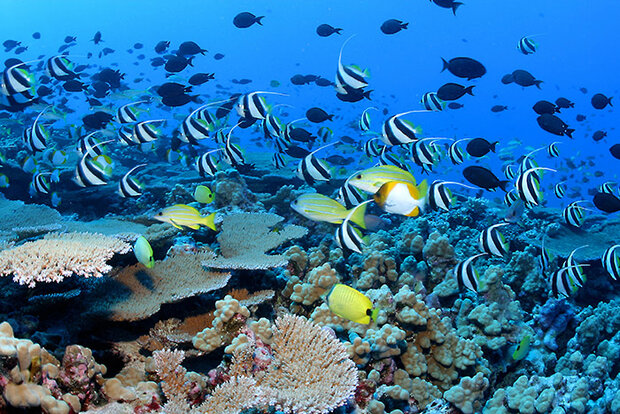New data product provides environmental indicators for ocean acidification, 1750–2100

A school of fish at Rapture Reef, French Frigate Shoals, Papahānaumokuākea National Marine Monument. Credit: James Watt, NOAA
Since humans began emitting large amounts of carbon dioxide (CO2) into the atmosphere at the start of the Industrial Revolution in 1750, scientists estimate that the ocean has absorbed 20 to 30 percent of these emissions. This is good news for reducing atmospheric CO2, the primary cause of modern climate warming, but the resulting chemical changes in ocean water are increasing acidity and restricting the lives of marine organisms. If humans continue to emit CO2 at high levels, preliminary model projections show a 100 to 150 percent increase in acidity from 2000 to 2100, jeopardizing marine ecosystems and the goods and services they provide to billions of people around the world. Accurate predictions of ocean acidity on regional and global scales are essential for informing critical research, mitigation, and adaptation strategies. A newly published study, supported by a collaboration between CPO’s Climate Observations and Monitoring (COM) Program, Climate Variability and Predictability (CVP) Program, and NOAA’s Global Ocean Monitoring and Observing (GOMO) Program, presents a new data product spanning 1750 to 2100 of marine chemical properties that indicate ocean acidification processes.